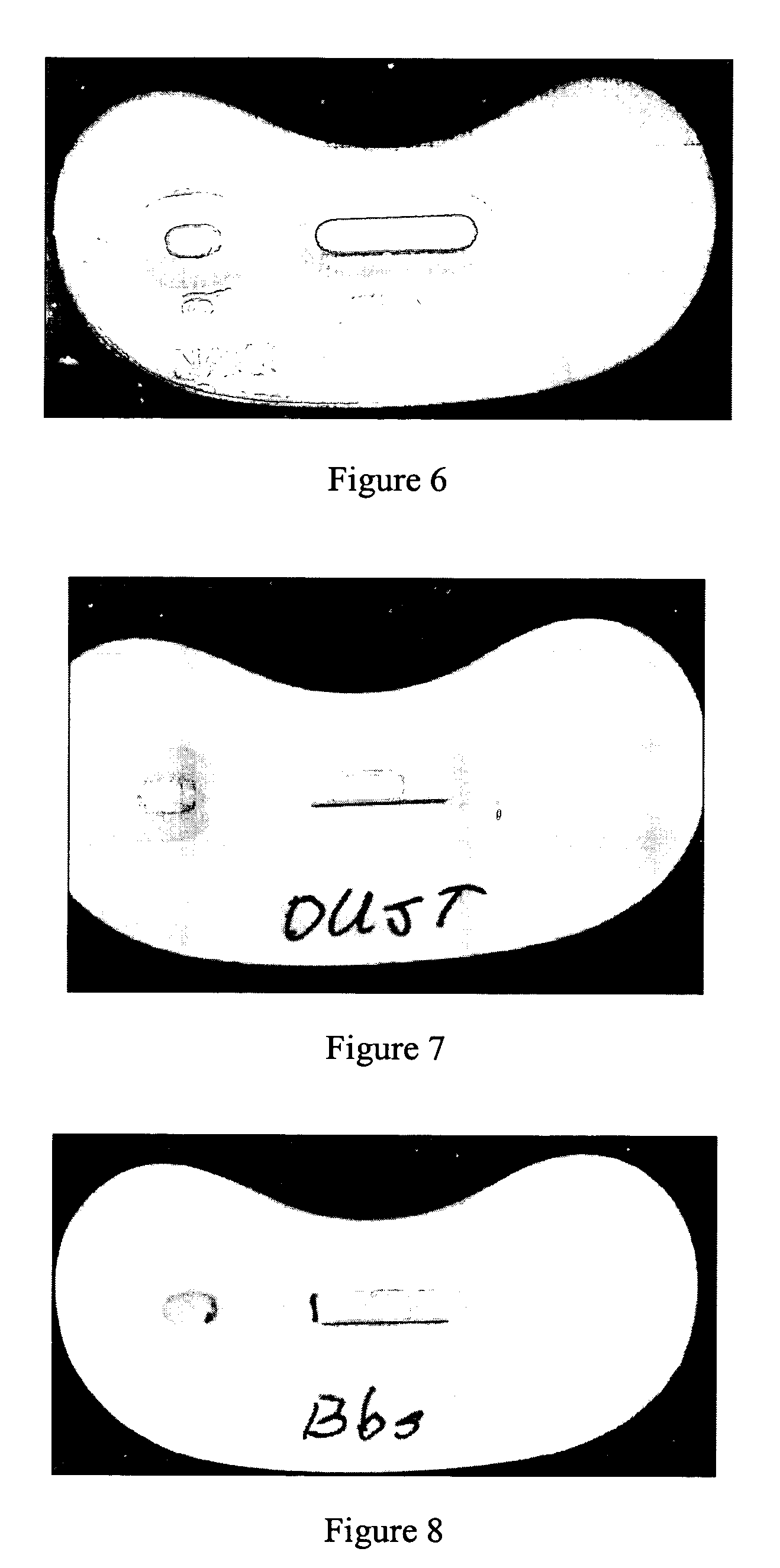Detection and measurement of blood-feeding activity
a technology of blood feeding activity and detection and measurement, applied in the direction of chemiluminescene/bioluminescence, instruments, material analysis, etc., can solve the problems of reducing productivity, annoyance, discomfort, health problems, economic losses, etc., and the management practices have not been eliminated
- Summary
- Abstract
- Description
- Claims
- Application Information
AI Technical Summary
Benefits of technology
Problems solved by technology
Method used
Image
Examples
example 1
Detecting Heme-Iron in Bedbug Culture Substrate
[0046]Cultures of bedbugs (Cimex lectularius) were maintained in glass jars containing a pressed paper cardboard substrate (FIG. 1) at room temperature and were allowed to feed at 7 to 14-day intervals on human blood. The bedbugs were allowed access to human skin through a 200-mesh nylon screen attached over the top of their jars. The skin was allowed to be in contact with the mesh for at least 10 minutes with each jar during which time the bedbugs fed to repletion. Cardboard substrate was removed from each jar at least 10 days after feeding, put into plastic bags, sealed, and stored in the freezer at temperatures below −10° C. until processed.
[0047]Fecal occult blood tests (FOBT) of two different peroxidase activity visualization chemistries were used from three different commercial suppliers (guaiac from Immunostics, Inc., Ocean, N.J. and Care Products, Waterbury, Conn. and 3,3′,5,5′-tetramethyl benzidine (TMB) from Biomerica, Inc., N...
example 2
Detection of Blood in Bedbug Cultures Using Luminol
[0050]Debris collected from bedbug cultures as in Example I was placed on absorbent plastic-backed paper (FIG. 9) and sprayed with a commercially available luminol blood visualization solution (BlueStar, ROC Import, Monte Carlo, Monaco). The resultant chemiluminescence was seen to be associated with the debris and not with the molted exoskeletons (FIG. 10). This visualization technique can be used as in initial step to identify individual or clusters of particles emitting light to be isolated and subjected to further testing to confirm hematophage activity.
example 3
Detection of Blood in Bedbug Cultures Using Urine Test Strips
[0051]Debris collected from bedbug cultures as in Example I was dissolved in water and tested for the presence of blood using commercially available urine dipsticks (such as from Roche or Bayer). With each test the presence of detectable blood was indicated by positive reaction on the appropriate pads.
PUM
| Property | Measurement | Unit |
|---|---|---|
| temperatures | aaaaa | aaaaa |
| frequency | aaaaa | aaaaa |
| structure | aaaaa | aaaaa |
Abstract
Description
Claims
Application Information
 Login to View More
Login to View More - R&D
- Intellectual Property
- Life Sciences
- Materials
- Tech Scout
- Unparalleled Data Quality
- Higher Quality Content
- 60% Fewer Hallucinations
Browse by: Latest US Patents, China's latest patents, Technical Efficacy Thesaurus, Application Domain, Technology Topic, Popular Technical Reports.
© 2025 PatSnap. All rights reserved.Legal|Privacy policy|Modern Slavery Act Transparency Statement|Sitemap|About US| Contact US: help@patsnap.com



